
Lotto Frequency Strategy Efficiency: Positional and Regardless of Position
By Ion Saliu, ★ Founder of Lotto Mathematics



I wrote a few years back (O tempora! O mores!) on the statistical feature of lottery software. The material also pointed to Gail Howard's lotto software (which includes statistical reports and lotto wheels):
• The impact of statistical reporting (frequency) is vastly exaggerated, especially when a lot of graphical elements are thrown in. Let me stress my point right from the start. Lottery is a numerical phenomenon. Only numerical analyses are meaningful. All graphical elements are irrelevant. All the charts and graphical patterns are meaningless, as far as lottery is concerned.
As for the numerical reports, only a few have significance, but they still leave the odds at an impractically high level. Most numerical reports deal with the frequency of numbers. Then the software categorizes the numbers into “hot” and “cold” numbers. The lotto player is advised to play only hot numbers, or a mixture of hot and cold numbers. The mathematical foundation of such an approach is very thin ice. The player can wait an eternity for those winning lotto numbers!
I didn't have proofs regarding the fragility of number frequency in lottery. Only recently I worked a special project dealing with LIE elimination. I looked at some frequency reports in Pennsylvania's Lottery 5-43 lotto game. I realized that it was very rare to see all 5 winning numbers in the top 22 (half of the field). Lottery experts advise playing the top half of the number field. I approximated the first half of the 5/43 lotto game to 22.
It is a lot more effective to apply the number frequency to the LIE elimination instead.
I applied 4 parpalucks — the ranges of analysis for lotto frequency. For example, a parpaluck = 43 meant that the frequency was calculated for the most recent 43 lottery drawings. Usually, longer ranges of analysis (or larger parpalucks) only diminish the effectiveness of a lotto strategy based on frequency.
For a 6-49 lotto game, I know them “experts” recommend selecting the top 24 numbers and then apply a lotto wheel. Unfortunately, the top half of frequency does not hit reasonably … frequently!
You'll see a few extraordinary drawings in the reports; I colored them in red. For example, in one case, only one lotto combination was possible for the ranks 13 14 15 16 17 (the real drawing was 14 23 30 32 34). Problem is, the lottery software vendors do not provide a function to generate combinations between frequency ranges. They only advise players to select all lotto numbers between 1 – 22 (the hot half), then play a lotto wheel for 22 numbers.
• • The best approach to lottery frequency separates the lotto numbers in 3 frequency groups. Specific amounts of lotto numbers are played from each group; e.g. from 0 to 5/6 numbers. Read more in-depth analyses:
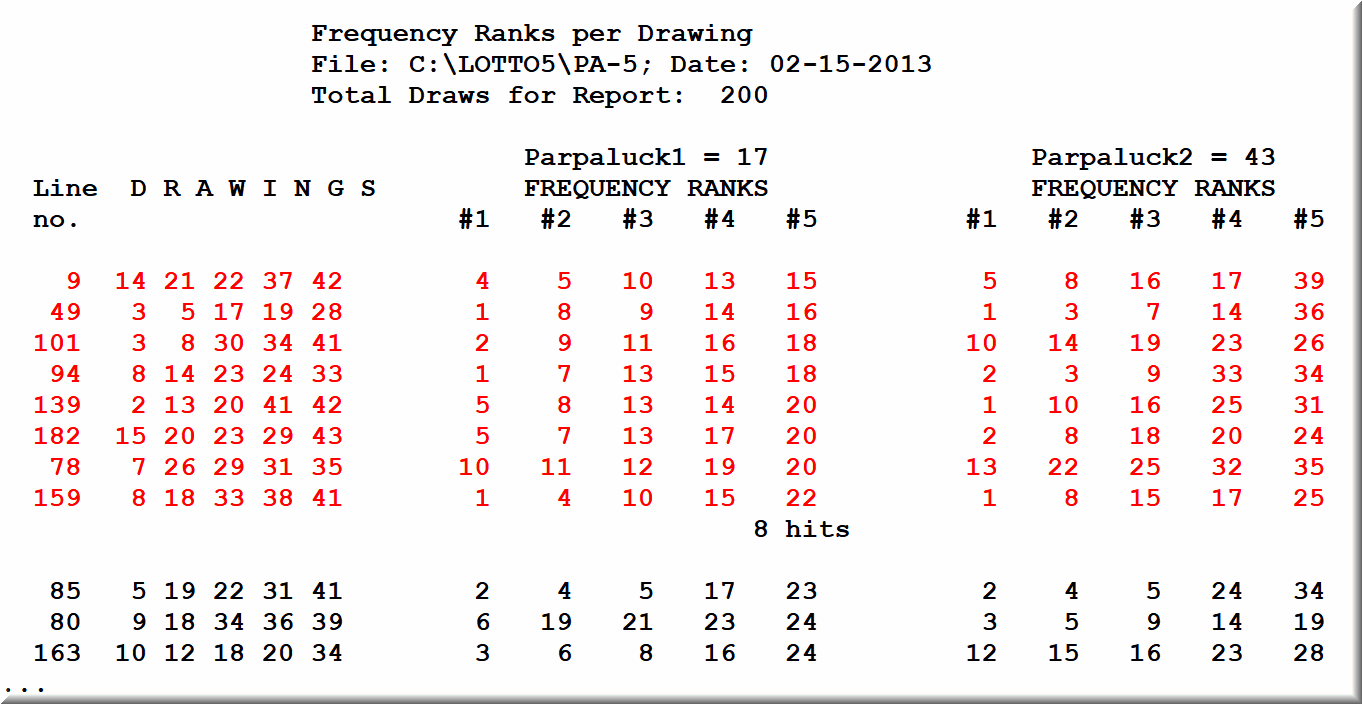
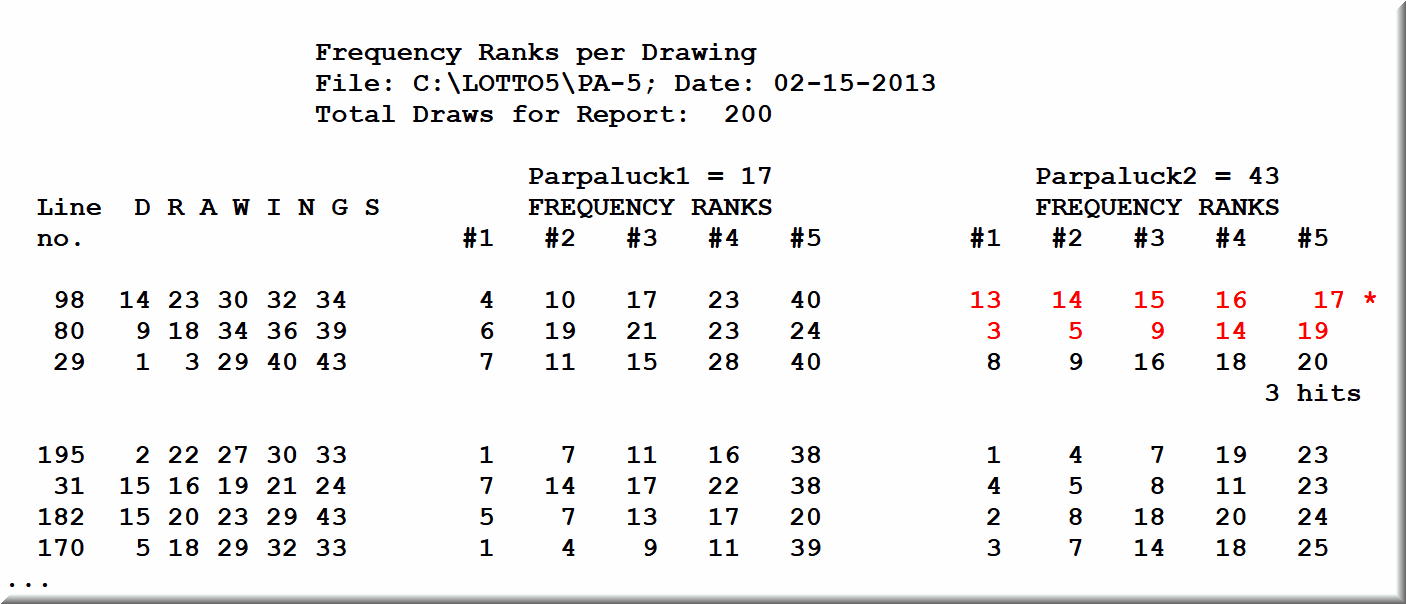
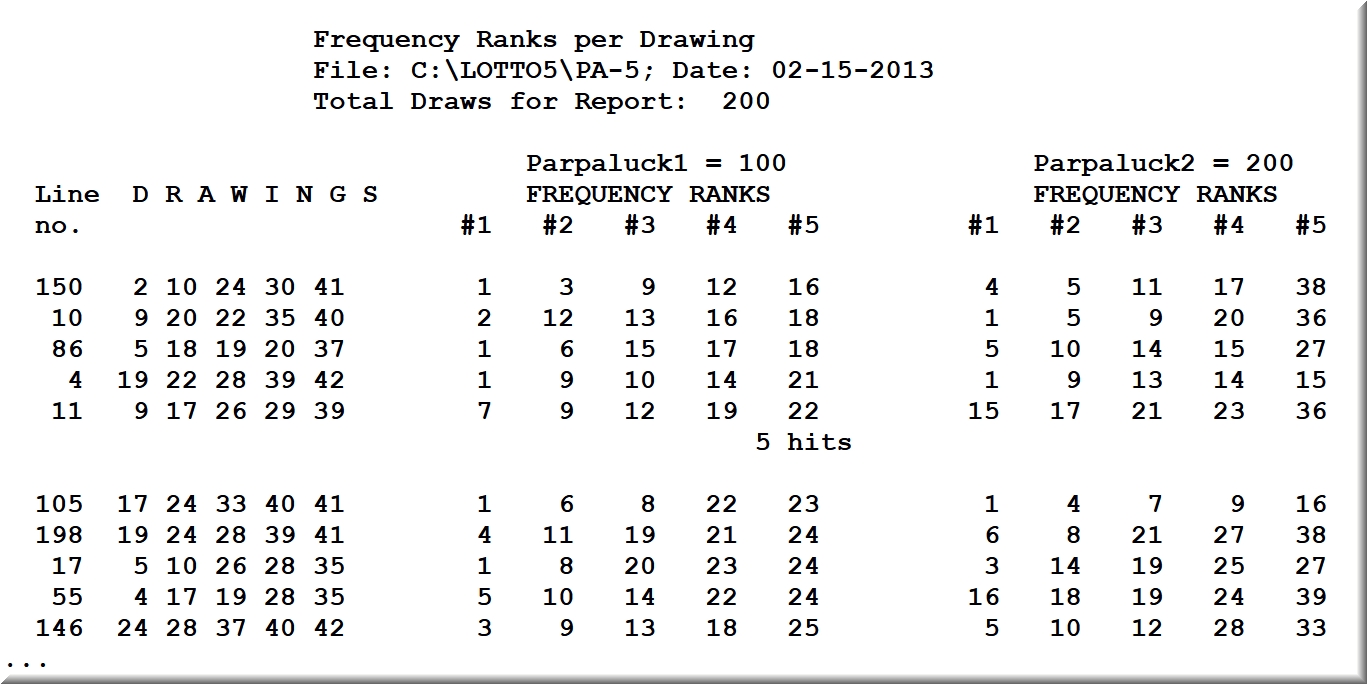
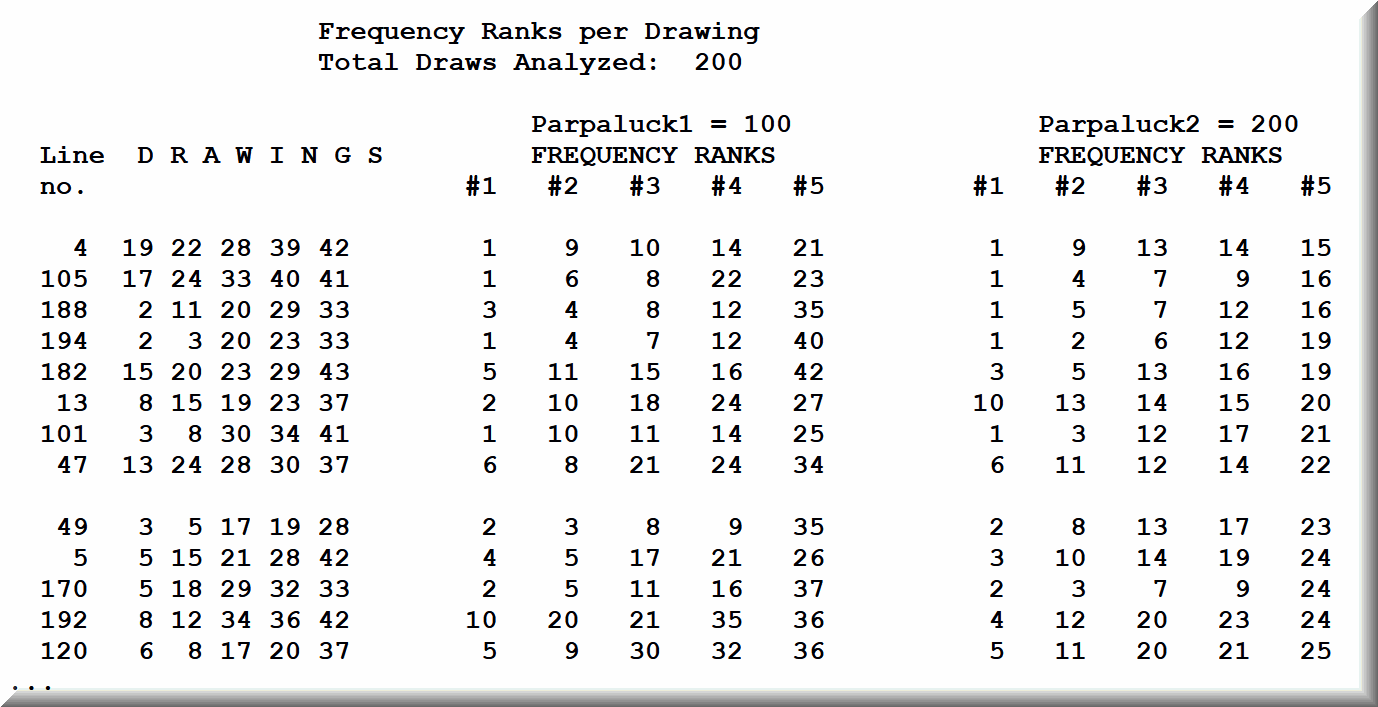
There is one efficient lottery strategy based on frequency, however. It is present in my software only: Positional frequency.
You might want to read: Lotto Software for Positional Frequency, Efficient Lottery Strategy.
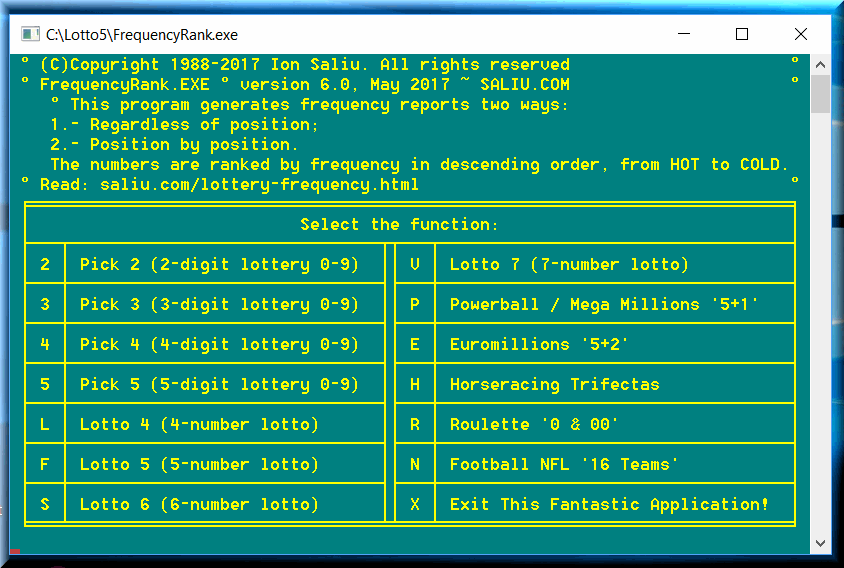

 Back to Forums Index Socrates Home Search
Back to Forums Index Socrates Home Search
